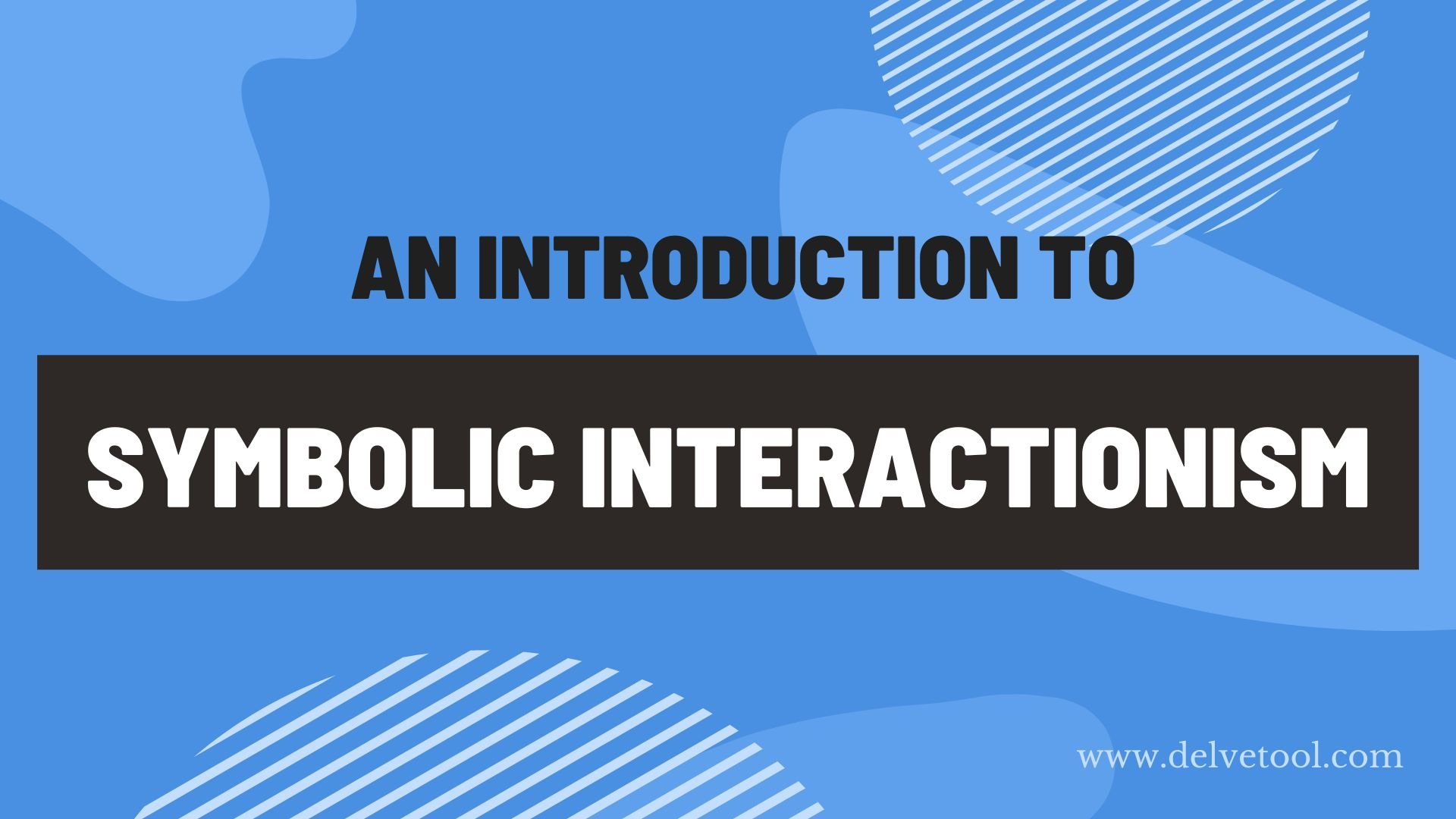Symbolic Interactionism
What is symbolic interaction theory?
Symbolic interaction theory, called symbolic interaction perspective, is a sociology theory that seeks to understand humans' relationship with their society by focusing on the symbols that help us give meaning to the experiences in our life. Social scientists consider symbolic interaction theory as a framework for building theories that see society as a product of everyday human interactions.
This theory focuses on how social interactions and people assign meanings to things around them based on interpretation of their interactions with others. The symbolic interactionist perspective is based on the notion that people make sense of their social worlds through communication and social interaction - the exchange of meaning through symbols and language.
The proponents of symbolic interaction theory argued that the meaning we ascribe to the world around us depends on our interactions with people, ideas, and events. They opined that our understanding of the world and how we interact with our society is based on what we learn from our interactions with others rather than the objective truth. In simpler terms, symbolic interactionists believe that our society is socially constructed by the meanings we attach to social interactions and events.
George Herbert Mead Symbolic interactionism
Sociologists believed George Herbert Mead, an American philosophy professor, was the true founder of symbolic interaction theory. His students gathered his teachings and lectures and published a book titled Mind, Self, and Society in his name. This book lays out the core concept of social interactionism.
Shortly after this publication, Herbert Blumer, a follower of mead, invented the term symbolic interactionism. Blumer also identified three premises from George Herbert Mead's symbolic interactionism theory. These premises are:
Humans act toward people or things based on the meanings they assign people or things.
The meanings we assign to people and things arise from our social interactions with one another. Blumer argued that meaning isn’t inherent in objects but formed through social interactions.
Humans adjust the meanings they assign people or things by internally interpreting their interactions with the world.
Max Weber's symbolic interactionism
One of the social theories that greatly influenced George Herbert Mead's symbolic interactionism is Max Weber's social action theory, sometimes called Max Weber’s symbolic interactionism. Max Weber believes society is a product of human activity and argued that social action should be the focus of study when analyzing a society. Max Weber describes social action as an act carried out by a person after carefully thinking about it.
Social theorists asserted that there are two ways of understanding social actions: Aktuelles verstehen and erklarendeds verstehen. The first is direct observational understanding, and the second is understanding the motive behind an action. Max Weber rejected the structuralist view that society exists independently of the people that make it up and rather argued that a society is a product of social actions.
Aside from George Herbert Mead, Herbert Blumer, and Max Weber, other theorists that contributed to symbolic interactionism in sociology include Max Weber, Charles Horton Cooley, Charles Darwin, and William Isaac Thomas.
Criticism of symbolic interactionism
Redmond’s study on Symbolic Interactionism identified some of the main criticisms of symbolic interactionism. First, the study stated that symbolic interactionism fails to address macro-level issues, such as politics and history, in social structure. Second, Redmond opined that symbolic interaction theory misses micro-level issues such as emotions. Lastly, the researcher asserted that lack of clarity of concept makes it difficult for social scientists to apply the symbolic interactionism perspective.
Qualitative analysis doesn't have to be overwhelming
Take Delve's free online course to learn how to find themes and patterns in your qualitative data. Get started here.

Try Delve Qualitative Analysis Tool
The Delve qualitative analysis tool can streamline the code for your qualitative data and help you to analyze data. Start a free trial of Delve today!
References:
Aksan, N; Kisac, B; Aydin, M; Demirbuken, S. (2009). Symbolic interaction theory. Procedia Social and Behavioral Sciences.
Carter, M; Fuller, C. (2015). Symbolic Interactionism. Sociopedia.isa.
Chamberlain-Salaun; Mills, J; Usher, K (2013). Linking Symbolic Interactionism and Grounded Theory Methods in a Research Design: From Corbin and Strauss’ Assumptions to Action. SAGE
Lehn, D; Gibson, W. (2011). Interaction and Symbolic Interactionism. Symbolic Interaction
Redmond, M. (2015). Symbolic Interactionism. English Technical Reports and White Papers 4
